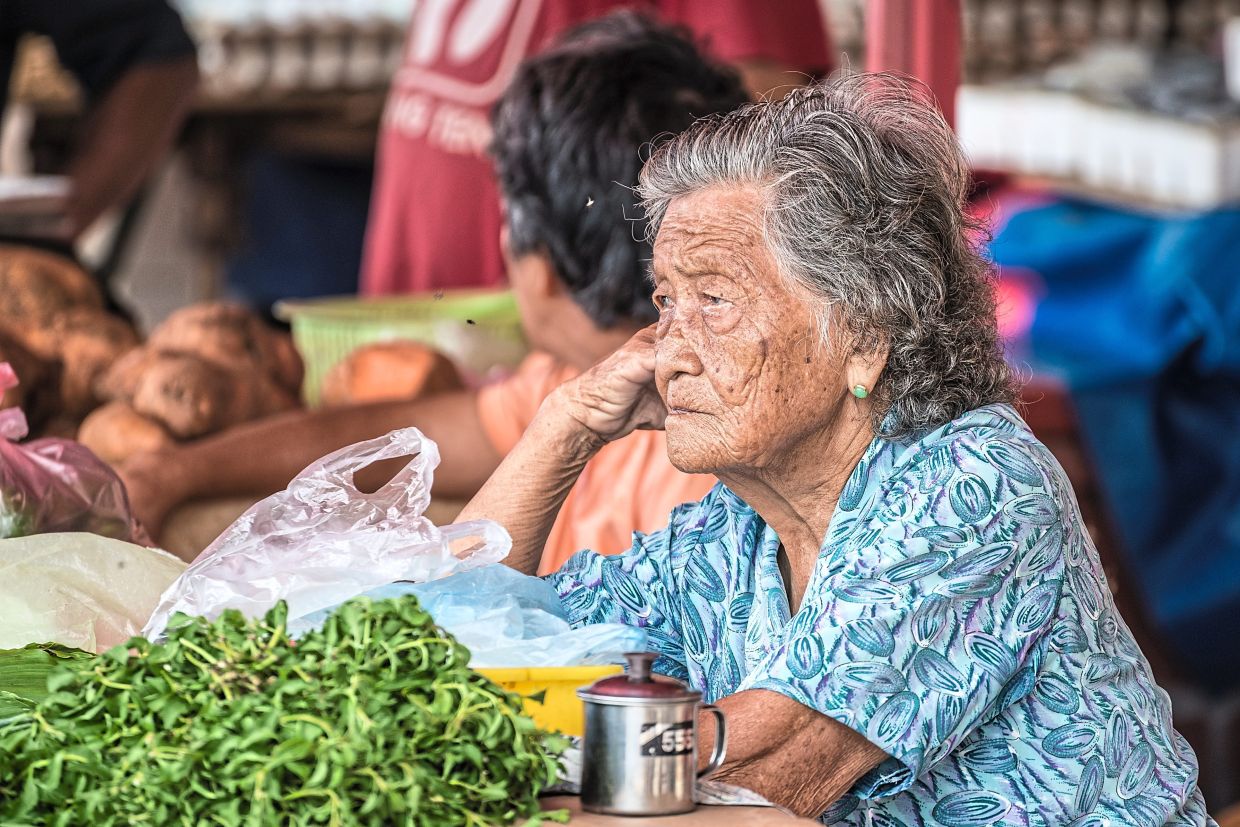
MALAYSIA’S ageing population and shifting labour dynamics demand more than superficial tweaks to our current pension system.
Our current model – meant to protect older citizens from destitution and enable them to age in dignity – could be improved further in both inclusivity and adequacy.
As of 2022, 42% of Malaysians aged 65 and above lived in relative poverty – the highest rate among all age groups.
That figure is worrying and warrants attention. Without decisive change, millions risk falling into old-age poverty, while rising pension obligations could strain Malaysia’s fiscal health.
Current pension system
The multitier pension model – advocated by the International Labour Organization (ILO) and widely adopted globally – offers a resilient and equitable framework for understanding our current pension system.
The model comprises four layers of intervention: universal assistance, basic contributory pensions, employment-based savings, and voluntary schemes. Malaysia reflects this structure, albeit partially.
Tier-0: This non-contributory, government-funded layer provides basic support to the most vulnerable elderly. In Malaysia, Bantuan Warga Emas (BWE) plays this role by covering around 4% of the elderly. Other assistance programmes exist in fragmentation, presenting opportunities for improvement.
Tier-1: This foundational tier – mandatory and inclusive – has yet to take shape in Malaysia. It is meant to ensure that every worker, regardless of employment type, receives a minimum level of retirement protection. Efforts to expand coverage, including for those in the informal sector, are ongoing. In this regard, the Employees Provident Fund’s i-Saraan scheme is a laudable initiative and a step in the right direction.
However, one could argue that it does not fully align with the International Labour Organisation’s Tier-1 design construct. Without such a foundational tier, nearly 40% of the labour force particularly those in informal sectors remain uncovered, highlighting a key area for future reform.
Tier-2: Malaysia’s Tier-2 includes schemes like Employees’ Provident Fund (EPF) contribution scheme, Public Sector Pension Scheme through Kumpulan Wang Persaraan (Diperbadankan) [KWAP] and Armed Forces Pension Scheme through Lembaga Tabung Angkatan Tentera (LTAT), which serve formal sector workers. EPF provides mandatory savings for the majority of Malaysia’s workforce, while KWAP and LTAT serve the public sector and armed forces through monthly pensions.
Tier-3: This tier provides an additional savings option on top of the mandatory Tier-2, offering individuals greater flexibility and choice in preparing for retirement. The Private Retirement Scheme (PRS) serves as the primary voluntary option, complemented by a wide range of insurance products offered by private insurance providers.
Together, these tiers form the backbone of a comprehensive pension system. Malaysia’s current framework provides a solid foundation.
With thoughtful enhancements, it can evolve into a model of inclusive and sustainable retirement security.
 About 42% of Malaysians aged 65 and above live in relative poverty — the highest among all age groups — underscoring a significant shortfall in retirement security.
About 42% of Malaysians aged 65 and above live in relative poverty — the highest among all age groups — underscoring a significant shortfall in retirement security.
Structural shortcomings
The most glaring gap is Tier-1. Informal workers, who make up a significant portion of Malaysia’s labour force, are largely invisible to the pension system. They fall outside Tier-2 coverage and are inadequately served by Tier-0 assistance.
This exclusion leaves millions vulnerable to old-age poverty or dependent on family support. Even within Tier-2, adequacy remains a concern. Temporary withdrawals during the Covid-19 crisis, coupled with low wages and inconsistent contributions, have eroded retirement savings. Meanwhile, civil service pensions – funded entirely by the government – faces its fair share of challenges, making reform essential for long-term sustainability.
Why reform matters
A robust pension system is more than a financial safety net – it is a pillar of national stability. It reduces financial burden across generations, ensuring older individuals are not overly reliant on strained family resources or state assistance.
The Malaysian Ageing and Retirement survey, conducted by the Social Wellbeing Research Centre of Universiti Malaya, shows that many elderly respondents receive an average of RM526 per month from their children. This places additional economic pressure to the younger generation, highlighting the need for better support systems.
A strong pension system also prepares the country for the inevitable demographic shifts. By 2050, nearly one in four Malaysians will be over 60. Linking retirement age to life expectancy, encouraging phased retirement, and strengthening contributory schemes can ease intergenerational tensions.
Without timely reforms, Malaysia may face rising old age poverty, higher reliance on public transfers, and widening inequality – challenges that could undermine long-term economic stability and jeopardise social cohesion. In short, a well-designed pension system does not just protect the elderly; it also strengthens Malaysia’s economic resilience and fosters solidarity between generations.
The path forward
Malaysia has taken proactive measures in addressing these issues. The 13th Malaysia Plan (RMK13) announcement, which outlines retirement reforms as part of the national priority for the next five years, signals policymakers’ commitment to managing the situation.
Revisions to retirement laws and initiatives to promote active elderly participation in economic activities are among the interventions outlined in RMK13.
Nonetheless, further action is needed to prepare for our ageing nation. A comprehensive, multitiered approach to pension reform warrants consideration.
A more consolidated Tier-0 and an introduction of a modest yet inclusive Tier-1 pension would help close the most urgent coverage gap.
Enhancing Tier-2 by improving contribution density and adequacy is equally vital. Meanwhile, Tier-3 may be revitalised through targeted financial literacy programmes and better-designed incentives. Malaysia’s pension system has served the nation well, but it must evolve to meet future demands.
Millions remain underserved, and many more are saving too little to retire with dignity. Rising obligations also call for prudent and careful long-term planning.
Reform is not a critique – it is a commitment to progress. By embracing a multitier model, Malaysia can build a pension system that is inclusive and sustainable.
The journey ahead is promising, and it calls for strategic and collective action. By fostering dialogue, building shared understanding, and driving impactful collaboration across the retirement ecosystem, we can strive to help the rakyat retire with dignity and confidence. By KWAP chief strategy and services officer Nazaiful Affendi Zainal Abidin, and KWAP Retirement Research assistant vice president Raja Abdul Azim Raja Abdullah.
KWAP shall not be responsible or liable for any error, omission, inaccuracy of the information, or for any reliance or usage of all or any part of this article whatsoever. All information contained herein is provided on an “as is basis”.









